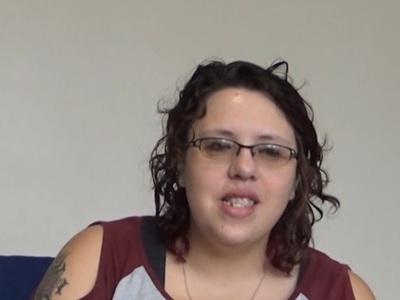Ashley

See full story
Ashley noticed “softball-size[d]” swelling in her son’s neck when he was eight years old. Since he experienced swelling and had been quite sick with mono several years before, Ashely took her son to the doctor several times. They were admitted to the hospital, and he was diagnosed with Hodgkin’s Lymphoma. Before a PICC line was placed in his arm, their health care providers asked if they “were willing . . . to take some of the samples that they took out of [ASHLEY’S SON] to help other kids that might go through the same process.” Ashely “signed [the] paperwork to help other families.”
In addition, Ashley’s son was offered “an experimental treatment that was a shorter time period” than other otions. Ashley had “a couple hours to figure out” what she “wanted to do.” With the help of a friend to keep her “calm” and make sure she was “paying attention to what they’re saying,” she agreed because it meant “they’ll do the testing to make sure [ASHLEY’S SON]’s doing okay.” Ultimately, she “went along with whatever they thought was best.” Ashely told them to “do whatever that will help him.” She wasn’t sure “what would work for him because” being Autistic, she wanted to “make it where he understands and knows that the doctors are there to help him and not hurt him. Since the trail meant shorter treatment, it was the best option for Ashley’s son because it meant he didn’t need to “stay in the hospital longer than necessary because they wanted him to still interact with people.”
Knowing that “whatever testing he went through . . . helps another family” was one of the “good parts” of participating for Ashley and her son. However, “the bad part is that he had to go through with the process . . . because of all the poking and prodding, he was bruised from head to toe because of them constantly needing a blood sample or any samples that they had to have at that time.” Thought Ashely wishes her son didn’t have to be left “bruised all the time,” she “know[s] that [ASHLEY’S SON] is happier that he helped other families in the long-run.”
